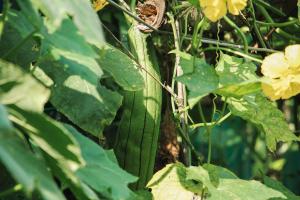Does Creek Water Support Plant Life?
Plant life is an essential part of our environment, and creeks are an important source of water for many plants. However, the question remains: does creek water support plant life? In this article, we will explore the factors that affect the ability of creek water to support plant life and investigate the different types of plants that can thrive in creeks.
The Role of Nutrients in Creek Water
Nutrients are essential for plant growth, and creeks can provide a steady supply of these essential elements. A healthy creek ecosystem contains a variety of nutrients, including nitrogen, phosphorus, and potassium, which are absorbed by plants to fuel their growth. However, excessive amounts of these nutrients can lead to an overgrowth of algae and other aquatic plants, which can ultimately harm the creek's ecosystem.
Water Flow and Oxygenation
The flow of water in a creek is also important for supporting plant life. Water that moves too quickly can strip away soil and disturb the growth of plants, while still water can become stagnant and oxygen-depleted. The oxygen content of creek water is crucial for the survival of plants, as well as the other organisms that live within the creek. Plants rely on oxygen to convert nutrients into energy, and without sufficient oxygen levels, they may become stressed or die off.
The Different Types of Plants That Thrive in Creeks
Despite the challenges that creek water can pose to plant life, there are an impressive variety of plants that can thrive in this environment. For example, some plants like cattails, rushes, and sedges, have long root systems that are able to extract nutrients from the soil and anchor them against the current. These plants also help to stabilize creek banks and prevent erosion.
Other types of plants, such as water lilies, have adapted to live partially submerged in creek water. These plants are able to extract oxygen from the water through specialized pores in their leaves and absorb nutrients from the creek's soil. Water lilies can also provide habitat and shelter for fish and other aquatic life.
The Importance of Protecting Creek Ecosystems
Creek ecosystems are vital for both plant and animal life, and they are often threatened by human activities such as pollution and overdevelopment. Examples of pollutants that can harm creek ecosystems include fertilizers, pesticides, and wastewater from residential and industrial sources. Additionally, when natural creeks are paved over or otherwise altered, the natural flow of water and nutrient cycles can be disrupted, leading to a loss of plant and animal diversity.
Protecting creek ecosystems requires a multifaceted approach that involves regulating human activity near waterways, minimizing pollution, and promoting the use of green infrastructure to control stormwater runoff. When creek ecosystems are healthy and thriving, they can provide numerous benefits to both people and nature, including improving water quality, reducing flood risk, and providing habitat for a wide variety of plant and animal species.
Conclusion
In conclusion, creek water does support plant life, but the ability of creek water to support plant life is influenced by many factors, including nutrient levels, water flow, and oxygen content. Understanding these factors is essential for protecting creek ecosystems and promoting plant and animal diversity. By taking steps to reduce pollution and preserve natural creek habitats, we can ensure that these vital waterways continue to support plant life and provide numerous benefits to our communities.

 how many times do yo...
how many times do yo... how many planted tre...
how many planted tre... how many pine trees ...
how many pine trees ... how many pecan trees...
how many pecan trees... how many plants comp...
how many plants comp... how many plants can ...
how many plants can ... how many plants and ...
how many plants and ... how many pepper plan...
how many pepper plan...































